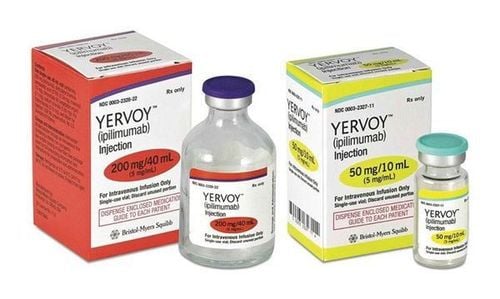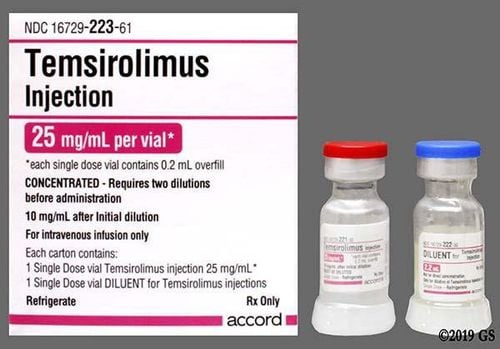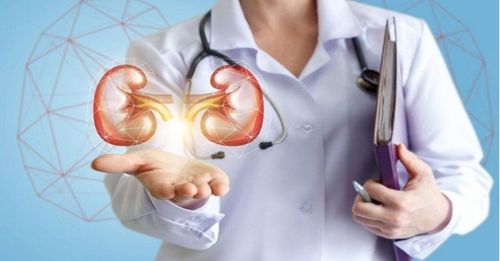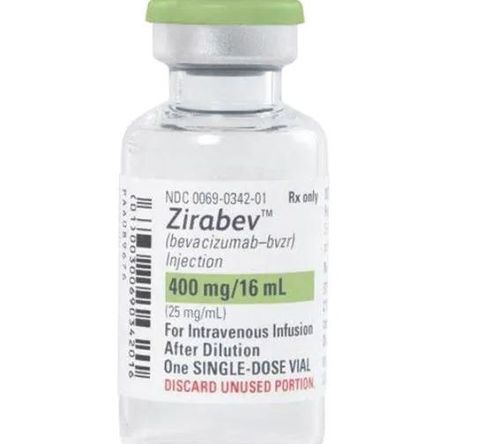This is an automatically translated article.
Renal vein thrombosis often begins with subtle renal dysfunction. In some cases, the onset may be acute, causing renal infarction. The treatment of renal vein thrombosis is usually based on the principles of treating existing diseases, using anticoagulants, in some cases, surgery to remove thrombus through catheter or using thrombolytic drugs.
1. What is Renal Venous Thrombosis? The cause to the illness
Renal vein thrombosis is a blockage of one or two major renal veins due to a blood clot that develops in the vein that carries blood from the kidney, which can lead to acute kidney injury or chronic kidney disease.
This cause of renal vein thrombosis is usually due to localized hypercoagulability or to nephrotic syndrome, minimal change glomerulopathy or, in some cases, to proliferative membranous glomerulonephritis. Other causes of renal vein thrombosis may be due to:
Rejection causes renal vein thrombosis; Kidney powder disease, diabetic nephropathy, nephritis vasculitis; Estrogen Therapy ; Pregnant women can also develop renal vein thrombosis; Primary hypercoagulable disorder; Sickle cell nephropathy causing renal vein thrombosis; SLE - Systemic lupus erythematosus is a chronic autoimmune inflammatory disease of multiple organ systems that can also cause renal vein thrombosis. Some rare causes may be related to decreased renal venous blood flow, such as renal malignancy invading the renal vein or extrinsic compression affecting the renal vein. Women taking oral contraceptives or those with trauma, dehydration, migratory thrombophlebitis, cocaine abuse, excessive diuretic use, or prolonged high-dose corticosteroid therapy are at increased risk of thrombosis. renal vein.
2. Functional symptoms and physical symptoms
Renal vein thrombosis often begins with subtle renal dysfunction. In some cases, the onset may be acute, causing renal infarction with symptoms such as:
People with acute renal vein thrombosis may have nausea and vomiting; Renal vein thrombosis also causes low back pain in patients; Some cases of gross hematuria and decreased urine output. However, when the cause of renal vein thrombosis is a hypercoagulable disorder, signs of thrombophlebitis may occur. In case the cause is kidney cancer, the signs of the disease (blood in urine, weight loss) will prevail.

Bệnh huyết khối tĩnh mạch thận thường khởi phát với triệu chứng rối loạn chức năng thận kín đáo
3. Diagnosis and treatment of renal vein thrombosis
3.1 Diagnosis of renal vein thrombosis Because the symptoms of this renal vein disease are vague, atypical and confused with other signs of kidney disease, the diagnosis should be based on medical techniques. Diagnosis is based on vascular imaging:
Diagnosis is based on renal vein thrombosis: In patients with renal infarction or any unexplained decline in renal function, especially in patients with Nephrotic syndrome or other risk factors should suggest renal vein thrombosis. At this time, the choice of imaging tests is usually the inferior vena cava for exploratory purposes to help confirm the diagnosis but can move the clot. Magnetic resonance imaging for diagnosis of renal vein thrombosis: Due to the risk factors of conventional venography techniques, the use of renal vein magnetic resonance imaging is increasingly used. Renal venous magnetic resonance imaging may be performed when the MLCT is above 30 mL/min. Doppler ultrasound: The renal vein Doppler ultrasound technique can help detect renal vein thrombosis, but this technique also has a high false-negative and false-positive rate. On ultrasound, there is evidence of dilated lateral vein compression surrounding the ureter, which may be characteristic of cases of chronic renal vein thrombosis. CT angiography: CT renal angiography will provide detailed information with high specificity and sensitivity, quickly. However, CT angiography requires the use of contrast medium, which can be toxic to the kidneys, so it should be used with caution. Electrolyte blood and urinalysis will be ordered if renal vein thrombosis is suspected to confirm impaired renal function. Evaluation of hypercoagulability: In cases where there is no obvious cause, it is necessary to do tests to evaluate hypercoagulability. Kidney biopsy: Kidney biopsy is usually nonspecific, but it can detect co-morbid kidney diseases. 4.2 Treatment of renal vein thrombosis The treatment of renal vein thrombosis is usually based on the principle of treating existing diseases, using anticoagulants, and in some cases, it may require surgery to remove thrombus through a catheter or use blood thinners. thrombolytic drugs. Specifically:
Use of drugs to treat renal vein thrombosis To treat renal vein thrombosis requires prolonged anticoagulation with low molecular weight heparin or initiation of anticoagulation if no intervention plan is available. invasive intervention.
Anticoagulants will work to minimize the risk of new blood clots in the renal veins, and at the same time, it will also improve kidney function and enhance the regeneration of blood vessels with clots. However, the use of anticoagulation should be continued for at least 6-12 months, in the case of concomitant hypercoagulable disorders, prolonged use is required.
Percutaneous catheter thrombectomy or thrombolytic therapy The most commonly recommended treatment for renal venous thrombosis via percutaneous catheter or thrombolytic therapy. However, in cases if the patient has an acute bilateral renal vein thrombosis and is associated with acute kidney injury that cannot be treated with percutaneous catheter thrombectomy or thrombolytics. thrombectomy should be considered.
Nephrectomy for treatment of renal vein thrombosis Nephrectomy should be performed only in cases where the patient has a total renal infarction or an existing medical condition that requires nephrectomy.
Treatment of renal vein thrombosis is usually time-based, but it will not cause any long-term damage to the kidneys. However, if the treatment is not timely or improperly, it can cause complications such as acute renal failure, renal vein thrombosis moving to the lungs causing pulmonary embolism, and in some cases the formation of blood clots. new block. Therefore, to avoid the risk of renal vein thrombosis, it is advisable to maintain enough fluid in the body to avoid dehydration.
To ensure safety and prevent dangerous complications, patients need to go to a reputable hospital to conduct examination and treatment as soon as there are signs of renal vein thrombosis. Currently, Vinmec International General Hospital is one of the leading prestigious hospitals in the country, trusted by a large number of patients for medical examination and treatment. Not only the physical system, modern equipment: 6 ultrasound rooms, 4 DR X-ray rooms (1 full-axis machine, 1 light machine, 1 general machine and 1 mammography machine) , 2 DR portable X-ray machines, 2 multi-row CT scanner rooms (1 128 rows and 1 16 arrays), 2 Magnetic resonance imaging rooms (1 3 Tesla and 1 1.5 Tesla), 1 room for 2 levels of interventional angiography and 1 room to measure bone mineral density.... Vinmec is also the place to gather a team of experienced doctors and nurses who will greatly assist in diagnosis and detection. early signs of abnormality in the patient's body. In particular, with a space designed according to 5-star hotel standards, Vinmec ensures to bring the patient the most comfort, friendliness and peace of mind.
Please dial HOTLINE for more information or register for an appointment HERE. Download MyVinmec app to make appointments faster and to manage your bookings easily.













